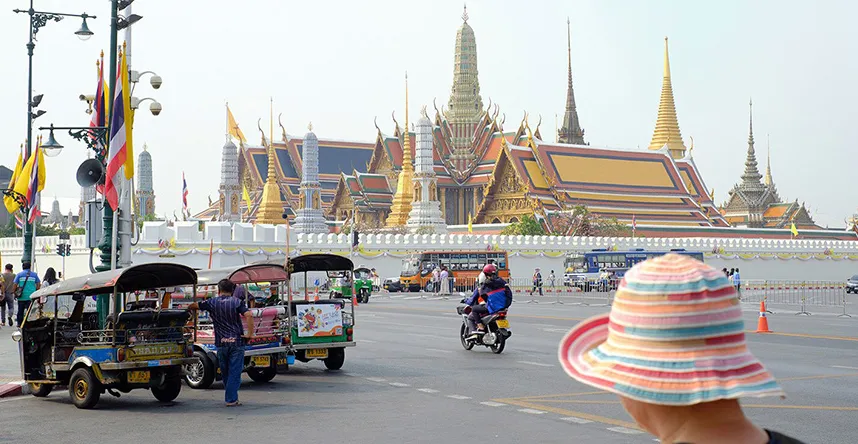Traveling to Southeast Asia promises a captivating mix of cultures, delectable cuisine, and stunning scenery. Among the top destinations, Singapore and Thailand draw millions of visitors annually with their unique attractions and rich histories. However, popular tourist spots in these countries sometimes come with tourist traps that can lead to unnecessary expenses and disappointing experiences. This article helps navigate these destinations wisely and ensures a journey filled with authentic moments and cherished memories. Using a Singapore and Thailand eSIM can also help travelers stay connected, making planning smoother and more flexible.
Understand Popular Tourist Traps
Recognizing common tourist traps is an essential step in planning a great trip. In Singapore, highly visited attractions such as Marina Bay Sands and Orchard Road are known for their luxurious appeal and premium prices. While these places offer an experience worth trying, stepping beyond the main tourist circuit can reveal charming, budget-friendly experiences. For example, exploring local hawker centers introduces travelers to authentic Singaporean dishes at affordable prices, showcasing the city-state’s rich food culture.
Thailand’s famous destinations, including Phuket’s beaches and Bangkok’s floating markets, are often packed with tourists and come with inflated prices. To avoid these areas, researching lesser-known but equally beautiful locations is critical. Whether finding quieter beaches or less-crowded local markets, exploring off-the-beaten paths can offer a more relaxed and genuine travel experience.
Seek Local Recommendations
Engaging with locals can elevate a travel experience and open doors to hidden gems. In Singapore, guided tours in historic neighborhoods like Kampong Glam or Little India provide a window into the city’s cultural diversity. Such tours, often led by locals, can showcase unique street art, traditional food spots, and boutique shops that large tourist groups might overlook. Locals can share personal insights into the best times to visit certain places, making it easier to avoid peak tourist crowds.
Thailand’s charm extends well beyond the prominent attractions. Chatting with residents or participating in travel communities online can help visitors discover temples and markets that are lesser known but rich in culture. For example, smaller temples in Chiang Mai offer a serene atmosphere with fewer visitors, creating an opportunity for peaceful exploration. Asking locals for recommendations ensures that experiences are tailored to local culture and are often more affordable than standard tourist routes.
Avoid Overpriced Tours and Packages
Tour packages are marketed as a convenient way to see famous attractions but often come with higher prices and limited flexibility. In Singapore, bundled tours with attractions like Gardens by the Bay, the Singapore Flyer, or Universal Studios can be expensive. Planning visits independently allows travelers to control their schedule and spend more time at places that truly interest them. Attractions like the Singapore Botanic Gardens, open to the public, can be enjoyed without needing an expensive package.
In Thailand, island-hopping and city tours can often be organized for a fraction of the cost by booking tickets separately. Renting a scooter or using public transport provides the flexibility to explore hidden spots and take in the sights at a personal pace. This approach not only helps in avoiding tourist traps but also leads to discovering more genuine local experiences.
Explore Alternative Activities
Stepping away from typical tourist itineraries can uncover unexpected delights. In Singapore, exploring less-visited neighborhoods like Tiong Bahru offers a fresh perspective away from the crowded malls and mainstream attractions. Tiong Bahru is known for its art scene, indie bookstores, and cafes that highlight local flavors. The vibrant energy of local night markets and community events adds to the experience without the high cost of tourist-centric activities.
Thailand’s offerings go beyond its well-known beaches and bustling markets. Venturing to national parks presents breathtaking views and fewer tourists. Activities like cooking classes, traditional Thai dance lessons, or artisan workshops can be a more enriching and culturally immersive experience.
Be Cautious with Shopping and Souvenirs
Shopping for souvenirs is a fun part of any trip, but it’s essential to be cautious when buying in busy tourist areas. In Singapore, shopping hubs like Bugis Street Market are popular but can come with inflated prices. Travelers can find unique items at better rates by visiting smaller, lesser-known markets or local artisan stores.
Thailand’s lively markets draw visitors, but tourists should stay vigilant about aggressive vendors and higher prices in popular areas. The famous floating markets, although picturesque, are known for their tourist-centric pricing. Instead, visiting night bazaars or local markets like Chiang Mai or Ayutthaya can lead to discovering unique products at fairer prices. Bargaining is typical and expected in many Thai markets, making shopping more interactive and budget-friendly.
Singapore and Thailand offer countless opportunities for memorable travel experiences. Avoiding tourist traps is critical to enjoying these destinations without stress or overspending. Travelers can create a more authentic and budget-friendly adventure by understanding common traps, seeking local advice, choosing alternative activities, and being careful with shopping.
